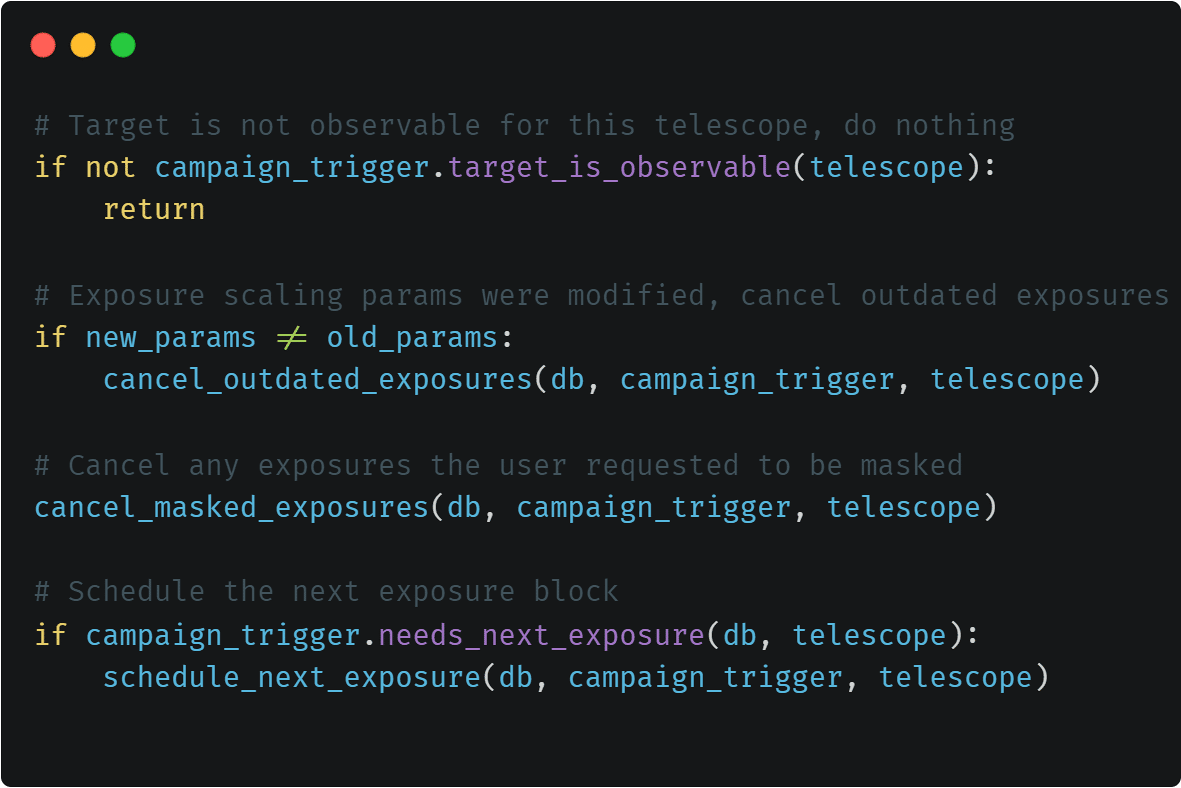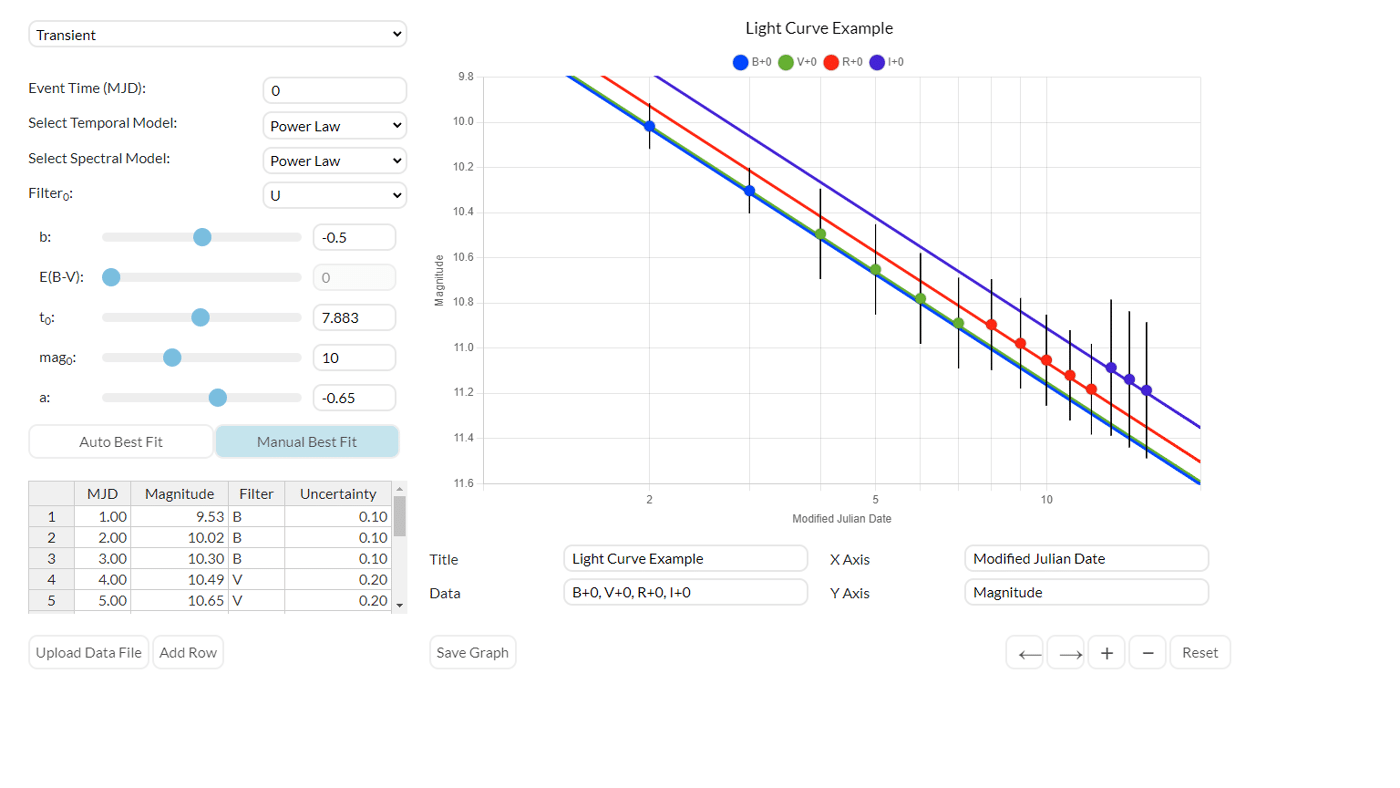transient events software suite
The Transient Events Software Suite (TESS) is a collection of
applications and algorithms for rapidly responding (~1 second)
to and observing astronomical objects whose brightness varies
on a rapid time scale. Early observations are critical for
solving numerous problems in astronomy. For example, early
observations of kilonova are required to distinguish between
kilonova models that produce degenerate light curves at later
times.
We always make a strong effort to make our tools and software
open source. However, some of these tools are part of a much
larger private repo and not accessible to people outside of
Skynet. That being said, if you're interested in using a tool
or making a similar one, I'm happy to share the relevant code
with anyone that asks. In the case of the Campaign Manager,
the source code is private, but anyone with a Skynet account
can use it via the web interface or using the Skynet API.
The Events Listener
The events listener currently listens for notices that are streamed via NASA's gamma-ray burst space observatory, Swift. Though it can easily be extended to listen to any notice streamed via NASA's Coordinate Network system. The listener parses the coordinates from a notice and creates a Skynet observation immediately. The listener has been used by our group to discover multiple gamma-ray bursts. Results are always immediately shared with the astronomical community. For example, see one of our discovery alerts . The listener is written in Python.

The Campaign Manager
The Campaign Manager is an
autonomous
observing algorithm intended to observe a single target.
The CM can command the entire Skynet network, managing
dozens of telescopes and thousands of exposures
simultaneously, and is useful for follow up observations
to various transient phenomena including
gravitational-wave events, gamma-ray burst
localizations, and other time-domain astronomical
events. I published a paper on the algorithm to PASP,
but I've significantly modified the algorithm since then
and the paper is no longer relevant.
The algorithm is written in Python and utilizes
SQLAlchemy as an ORM. The UI is written using JavaScript
and JQuery.

PYSAD
Python Search and Discovery (PYSAD) is an application for performing a narrow-field, targeted search over a localization region. PYSAD queries the NASA/IPAC Extragalactic Database (NED) to get the list of galaxy coordinates within the region (can be thousands of galaxies). It will then create observations for a specified number of those galaxies which can be used to find the transient. PYSAD also offers the ability to intelligently update the observations when the localization region changes which can significantly modify the galaxies that need to be observed. PYSAD is completely written in Python.
The Transient Plotting Tool
The transient plotting tool is designed to plot light
curve data and automatically extract the spectral and
temporal indices. These values describe how to the
transient object's brightness varies with frequency and
time, respectively. It is part of a larger collection of
open source plotting tools created by Skynet and
designed for education. The front end is written in pure
TypeScript, while the server side is written in Python.
Note that many of the tools in the links below were
created by other undergrad students in my group and not
by me.

